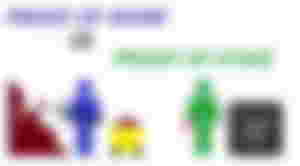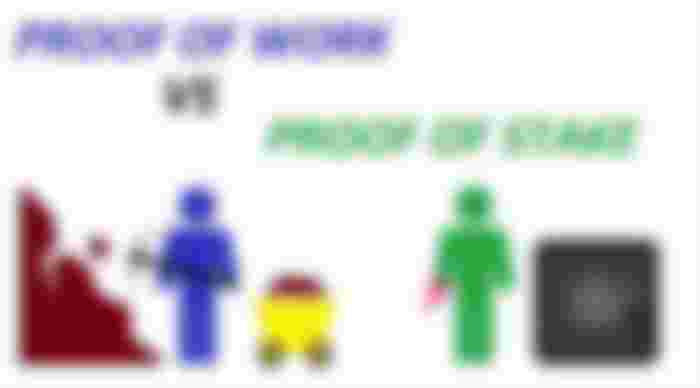In late 2020, the Ethereum blockchain begun to undergo a transformation that would hopefully improve it to the point where it would become a shining star in the cryptocurrency space. But like anything in this world, there have been some growing pains—which will hopefully be eliminated soon thanks to a couple upcoming upgrades to the Ethereum system.
Ethereum will be launching two planned upgrades to the blockchain, a merge, and the addition of shard chains. Both of these changes are being put forth in the hopes of resolving some of the current problems with the blockchain. But changes aren’t always well received by everyone.
Keep reading to find out just how these planned upgrades to the Ethereum blockchain might affect you, and what it means for the future of blockchain, and cryptocurrency technology, as a whole.

What is the Merge?
The first coming change to the Ethereum blockchain is something known as the merge. This merge will effectively make the Beacon Chain and the Ethereum mainnet the same thing.
To understand what a big deal this is, it’s important to understand what the Beacon Chain is. Ethereum realized long ago that it needed to do something about its scalability issues. But the problem is, it’s very difficult to build a blockchain and make changes while the blockchain is in use. In order to combat this problem, the developers of Ethereum have been working on Ethereum 2.0 on a separate system called the Beacon Chain. On this chain, a proof of stake consensus mechanism is used instead of proof of work.
On December 1st, 2020, the Beacon Chain launched and it currently runs parallel to the mainnet. And although it had much of the Ethereum functionality, it did not allow for the creation or execution of dapps. Which is why, at some point, it must be merged with the mainnet. When this happens, proof of work will no longer be a thing for Ethereum, and the entire blockchain will run on a proof of stake consensus mechanism. This is not a good thing for the miners of Ethereum, as it will mean they are out of a job unless they have earned and saved enough Ethereum to transfer over to staking the system.
It’s sad that the miners are out of a job, but the proof of stake system really is better for Ethereum as it will improve the speed of transactions, lower their cost, and ultimately lower the carbon footprint that Ethereum is leaving on this earth. And the cool part is, when the merge happens, the history of the Beacon Chain and the mainnet will become one. In the meantime, until this happens (and directly after it does happen) there are a few features of the blockchain that are unable to be used. At this time, the main functionality that will be unavailable is the ability to withdraw staked ETH.
So when is this happening? Well, originally it was supposed to launch in late 2020, but like everything in the software development world, it’s been delayed. According to current predictions, the merge will take place in the first or second quarter of 2022.

What Are Shard Chains?
Once the merge has occurred, it will be easier to add additional upgrades to the Ethereum blockchain, and one of the big ones that will greatly improve functionality is something known as shard chains.
Currently, processing transactions on the Ethereum blockchain is too slow for widespread adaptation. Changing from a proof of work to a proof of stake consensus mechanism will help with this a little, but it won’t solve the problem completely. That is where shard chains come in to play.
Shards, or sharding, is a process of splitting a database so separate sections of the database can run at the same time alongside one another but process different transactions. Think of it like a tree, instead of branching up, sharding is branching out to help the tree bear the load of the leaves more laterally. This way the tree won’t tip over. Besides just increasing the speeds and load of transactions the blockchain is able to handle, this also makes it much easier for validators to run nodes. Instead of requiring a bunch of fancy equipment and a ton of electricity, people will be able to run Ethereum nodes from their laptop and even their cell phones.
This upgrade has to come after the merge because the shards need the Beacon Chain to operate. The metaphor used by the Ethereum developers is to think of the Beacon Chain as a spinal column, and the shards as ribs—without the spinal column they have nothing to attach to, and are unable to function. In the same way, the shard chains can’t function without the Beacon Chain because they will be unable to process transactions concurrently, and call upon validators in the correct order without the thing that ties them all together. Because of this, the prediction for the launch of the shard chains is 2022, but of course if the merge gets delayed again, so too will this upgrade be delayed.
What Will Ethereum Miners Do in the Future?
Clearly, with these two pending upgrades, although they keep being delayed, the days of being an Ethereum miner are numbered. Unfortunately, there isn’t anything the miners can do to stop what is happening to Ethereum other than saving up enough Ethereum to be able to transfer over to staking the blockchain after the merge.
If miners choose not to transfer over to the staking and validation of Ethereum 2.0, they can change to mining a different cryptocurrency, which many miners have already done. Ethereum Classic and Ravencoin are two very similar coins to mine, and according to forums, some miners have already made the change because it is easy to do so if you mine using GPUs. If you mine using ASIC’s however, there isn’t really anything you can switch to mining, and these miners will be out of a job, and stuck with many ASIC’s that will be useless. Only time will tell what becomes of these miners.
All in all, don’t be too sad for the out of work miners, because the pending upgrades to the Ethereum blockchain are necessary to propel blockchain technology into a future where it can be widely used by all. And if you’re a soon to be out of work miner, well, it’s time to start saving that ETH so you can start staking the blockchain of the future.
This article was brought to you by the Provably Fair Crypto Casino, MintDice. Originally posted on MintDice.


I'm new to this . And this information is very substantial for me to understand what Ethereum is and what will be the possible happenings about it in the future . Thank a lot.